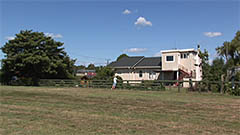Terminology
It's unavoidable — if you're serious, you've got to know some jargon. Fortunately, it's not too complicated. This page contains a few essential terms to get you started.
Shot: All video is made up of shots. A shot is basically from when you press record to when you stop recording. Like the individual photos which make up an album, the shots get put together to make a video.
Framing & Composition: The frame is the picture you see in the viewfinder (or on a monitor). Composition refers to the layout of everything within a picture frame — what the subject is, where it is in the frame, which way it's facing/looking, the background, the foreground, lighting, etc.
When you "frame" a shot, you adjust the camera position and zoom lens until your shot has the desired composition.
There is a general set of rules in the video industry which describe how to frame different types of camera shots, such as the ones illustrated below (for more information see Types of Camera Shots).

VWS (Very Wide Shot)
Shows the subject's environment.

WS (Wide Shot)
Shows the whole subject.

CU (Close Up)
Shows a feature of the subject.
Transition: Shots are linked (edited) in a sequence to tell a larger story. The way in which any two shots are joined together is called the transition.
Usually this is a simple cut, in which one shot changes instantly to the next. More complex transitions include mixing, wipes and digital effects. A moving shot (e.g. pan) can also be thought of as a transition from one shot to a new one.
The transition is very important in camera work, and you need to think constantly about how every shot will fit in with the ones before and after it. The key is not so much how the transition is achieved technically, but how the composition of each shot fits together.
For more information see Video Transitions.
Here are few more important terms. They will be explained in greater detail later:
| Pan | Side-to-side camera movement. |
| Tilt | Up-and-down camera movement. |
| Zoom | In-and-out camera movement (i.e. closer and more distant). |
| Iris (Exposure) | The opening which lets light into the camera. A wider iris means more light and a brighter picture. |
| White balance | Adjusting the colours until they look natural and consistent. |
| Shutter | Analogous to the shutter in a still camera. |
| Audio | Sound which is recorded to go with the pictures. |
Note: You can find more terminology in our media glossary and list of camera shots.
Next Page: Planning